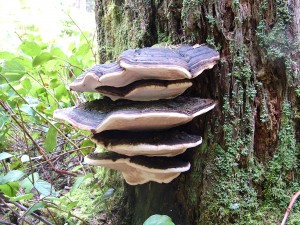
Architect's image of new Mathias Lab, complete with rain cistern on porch and wetlands to the left. (Credit: EwingCole)


Architect's image of new Mathias Lab, complete with rain cistern on porch and wetlands to the left. (Credit: EwingCole)

Research suggests some species in the tropics and subtropics may be more resistant to climate change than species closer to the poles. (Credit: SERC)

Aerial view of Mangal Cay in the western Caribbean - just one of many mangrove havens Ilka Feller has explored.
Ilka Feller, senior ecologist at the Smithsonian Environmental Research Center, will lead the effort to track more than 100 miles of Florida mangrove forests encroaching on their northern neighbors, the salt marshes. Feller has been studying mangroves for almost 20 years, keeping tabs on their progress in Florida, Panama, Belize and Australia. The new grant is one of 15 NASA-sponsored projects that will combine satellite data with field work to give scientists a bird’s-eye view of climate change.

A bacterium called Desulfovibrio desulfuricans strain ND132 can transform elemental mercury into methylmercury, a human neurotoxin. Credit: Oak Ridge National Laboratory.
A newly decoded bacterial genome brings scientists one step closer to unlocking the secret behind the production of methylmercury, the chemical notorious for contaminating tuna and other seafood.

SERC researcher George Smith opens an air vent on the ship Patcantrell for a ballast water experiment. (Credit: Timothy Mullady/SERC)
The global economy depends on marine transportation. But in addition to cargo, the world’s 50,000-plus commercial ships carry tiny stowaways that can cause huge problems for the environment and economy. A new model, published Thursday in the journal Environmental Science & Technology, will help ships screen more accurately for dangerous species before they unload.
By Monaca Noble
What are these rocks doing on the mudflat? That was the question a group of researchers in San Francisco’s South Bay asked in 2005. They were engaged in a native oyster restoration project when they stumbled upon some rather large rocks. They kicked one to the surface and recognized it as a bryozoan colony. SERC researcher Chela Zabin realized that this free-living bryozoan colony was very unusual; normally they grow on hard surfaces. Zabin and Joshua Mackie, of San Jose State University, identified the organism as Schizoporella errata, a type of calcified encrusting bryozoan that usually grows on pilings, boat hulls and docks.By Florian von Bechtolsheim and Anne Phillip, 2010 Summer Interns
“Anybody got some heavy-duty, double-zipper, sandwich-size Ziploc bags?” We had many such questions for everyone at SERC. We were known this summer as two students, looking for random stuff and entrenching ourselves in the wet lab. There was a reason for that.
Click to continue »
Most of the time, nutrients are viewed as a positive and essential part of life. However, excess amounts of a nutrient, like nitrogen, can create major ecological problems for the Chesapeake Bay and other aquatic ecosystems. Too much nitrogen leads to an abundance of microscopic plant growth in the water. When the algae die and decay, they consume the oxygen that other organisms need to thrive.
Much of the Bay’s nitrogen pollution comes from farms where rainwater carries nitrate, a form of nitrogen, from fields into streams that drain into the Bay. For years, ecologists have noted that forests and wetlands growing between croplands and streams can reduce the amount of nitrate that reaches the waterways. Scientists have measured nitrate removal by these “riparian buffers,” but only in small study areas.
Click to continue »
This summer from August 7th through August 13th, 9 students went on a journey through the Chesapeake Bay watershed. This trip was organized and led by Josh Falk, an Education Specialist at SERC, and Kevin Schabow, an educator at the NOAA Chesapeake Bay Office. The purpose of this trip was to immerse high school age students in the complex nature of the science, culture and natural resources that the Bay’s watershed has to offer. This year, the students were assigned to report on what they learned and what they did. Here is their story.
Click to continue »
As summer wanes in the Chesapeake Bay, many female blue crabs are preparing for an epic journey. Come September they will walk and swim their way toward the mouth of the Chesapeake to release their eggs. Some will travel more than 150 miles. SERC scientists have studied the blue crab’s migratory patterns for more than a decade. Their findings have revealed new insight into the life history of this important species and have helped inform management policies. Tracking these invertebrates is not easy: it involves thousands of pink plastic tags, a unique collaboration with watermen and a blue crab hotline…